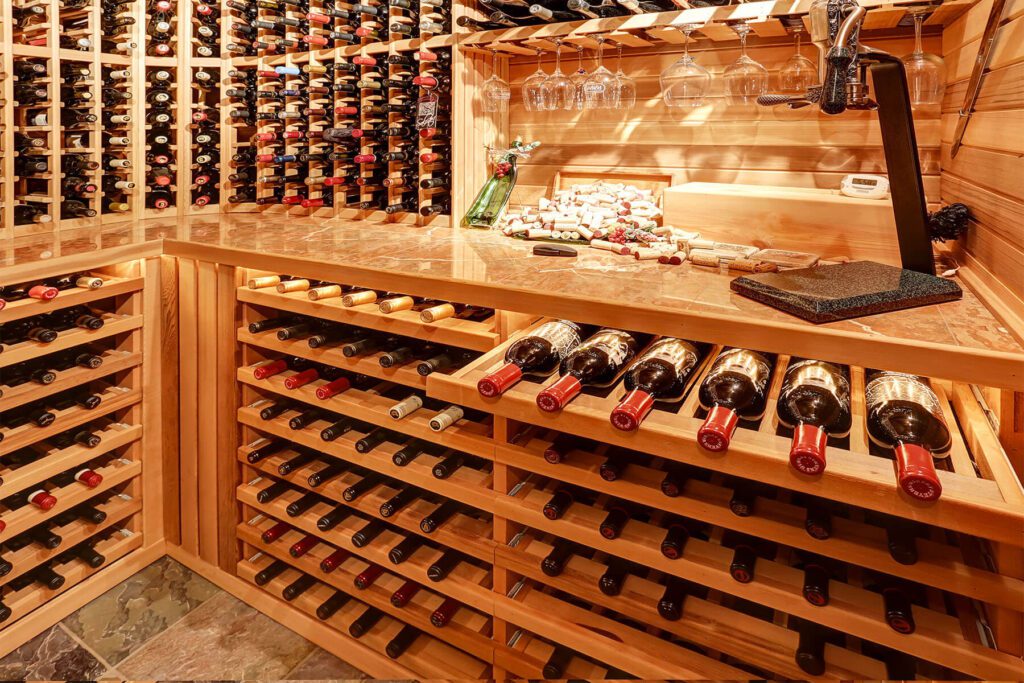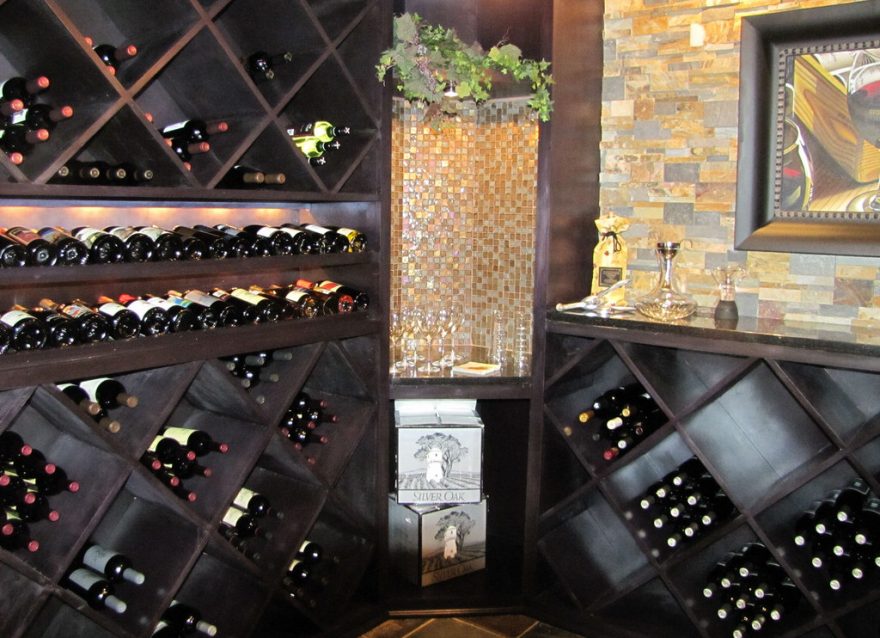For wine enthusiasts, whether casual drinkers or serious collectors, the question of proper wine storage often arises. While enjoying a bottle right after purchase is common, storing wine under the wrong conditions can ruin its taste, aroma, and even its value. That’s where the concept of a wine cellar comes into play.
But why store wine in a cellar? A wine cellar offers a controlled environment designed to protect wine from factors that can degrade its quality over time. These factors include temperature fluctuations, light exposure, and humidity imbalances. Proper cellaring isn’t just about avoiding spoilage—it’s about enhancing the flavor profile of age-worthy wines, preserving their value, and ensuring that every sip is as delightful as the winemaker intended.

What is a Wine Cellar?
A wine cellar is a specially designed storage space that provides optimal conditions for preserving and aging wine. Unlike a standard shelf or cupboard, a wine cellar maintains consistent temperature, humidity, and light levels to protect wine from spoilage or premature aging.
There are several types of wine cellars to consider:
- Traditional Underground Cellars:
These are built below ground, taking advantage of natural insulation to maintain stable conditions. They’re ideal for larger wine collections and long-term aging. Underground cellars have been used for centuries by winemakers and collectors. - Climate-Controlled Wine Cellars:
Modern homes may feature above-ground cellars with advanced climate control systems. These replicate underground conditions by managing temperature, humidity, and air circulation through technology. - Wine Fridges and Cabinets:
For those with limited space or smaller collections, wine fridges or cabinets offer a compact alternative. They are portable and typically allow for the storage of wines at multiple temperature zones. - Professional Wine Storage Facilities:
If you don’t have the space for a cellar, many services offer secure wine storage with expert maintenance of optimal conditions. This is particularly useful for valuable or rare bottles.
Why Use a Wine Cellar?
The main reason to store wine in a cellar is preservation. Wine is a delicate product, susceptible to environmental changes that can compromise its taste and value. Here’s what a wine cellar achieves:
- Temperature Regulation:
Wine thrives in a stable temperature range of 50-59°F. Temperatures higher than this can accelerate the aging process, while lower temperatures can slow it too much, potentially leading to spoilage. Fluctuations in temperature can cause corks to expand and contract, leading to air seepage. - Humidity Control:
Humidity levels of 50-70% are crucial for keeping corks moist and preventing them from drying out. A dry cork can allow air into the bottle, oxidizing the wine. On the other hand, excessive humidity can lead to mold growth on the labels or corks. - Protection from Light:
Exposure to UV light can damage wine, causing it to degrade chemically and develop unpleasant flavors. A wine cellar blocks out harmful light, preserving the wine’s integrity. - Vibration-Free Environment:
Vibrations disturb the sediment in wine, particularly in bottles meant for aging. This can lead to a gritty texture or off-flavors. A wine cellar provides a stable, vibration-free environment.
By providing these ideal conditions, wine cellars allow you to preserve the original quality of your wine and, for certain varieties, enhance its flavors over time.

Key Benefits of Storing Wine in a Cellar
Storing wine in a cellar offers numerous advantages, ranging from preserving the bottle’s current quality to enhancing its flavor and value over time. Here’s an in-depth look at the key benefits:
1. Protection from Environmental Factors
Wine is sensitive to its surroundings. A cellar creates a controlled environment that shields it from the detrimental effects of:
- Temperature Fluctuations: Extreme heat can cook wine, causing it to develop flat or stewed flavors, while cold temperatures can dull its aromatic profile. A cellar keeps temperatures stable, ensuring the wine matures gracefully.
- Light Exposure: Ultraviolet (UV) light alters the chemical composition of wine, leading to spoilage. This is why wine bottles are often tinted; however, even tinted glass isn’t enough protection. A cellar eliminates this risk by maintaining a dark space.
- Humidity Imbalance: Dry conditions can cause corks to shrink, allowing oxygen to seep into the bottle and spoil the wine. Excessive humidity can lead to mold, ruining the label and risking contamination. A cellar balances humidity levels, ensuring wine stays safe.
2. Aging Potential and Flavor Enhancement
Not all wines improve with age, but those designed for long-term storage (like fine reds and vintage ports) develop richer flavors, smoother tannins, and complex aromas over time. A cellar’s controlled conditions allow this process to happen naturally. For example:
- Red Wines: Varieties like Bordeaux, Cabernet Sauvignon, and Barolo benefit from extended aging as they soften their tannins and unveil layered flavors like dark fruits, tobacco, and earthiness.
- White Wines: While fewer white wines are meant to age, certain types like Chardonnay and Riesling can develop honeyed or nutty notes over time.
- Champagne: Prestige cuvées from top Champagne houses can age for decades, developing richer textures and nuanced flavors.
Proper cellaring ensures wines achieve their full potential, offering a reward for patience.
3. Investment Preservation
Wine isn’t just a beverage—it can also be a valuable asset. Rare or collectible bottles often appreciate in value over time. For instance:
- A case of 1982 Château Lafite Rothschild originally sold for around $400. Today, it can fetch over $40,000 at auction, provided it has been stored properly in ideal conditions.
- Similarly, Burgundy wines from Domaine de la Romanée-Conti are highly sought after, with prices climbing significantly when provenance and storage are verified.
A wine cellar protects your collection’s value, ensuring bottles remain in prime condition for resale or personal enjoyment.
4. Organization and Accessibility
Having a dedicated wine cellar allows you to organize your collection by type, vintage, region, or other preferences. This makes it easier to:
- Track inventory using cellar management apps or spreadsheets.
- Pair wines with meals or special occasions.
- Rotate bottles for optimal aging without losing track of what’s ready to drink.
5. Emotional Satisfaction and Prestige
For wine lovers, a cellar isn’t just about functionality—it’s a statement of passion. Showcasing a curated wine collection can be a source of pride and a conversation starter. Additionally, pulling out a perfectly aged bottle for guests highlights your dedication to quality.
Case Study: How Proper Cellaring Saved a Wine Collection
A collector in California once experienced a power outage during a heatwave. While his entire home suffered from the lack of air conditioning, his custom-built wine cellar maintained a steady 55°F thanks to its insulation and backup generator. As a result, he avoided potential losses of over $50,000 in rare wines, showcasing how a proper cellar can act as an insurance policy for your collection.

Factors That Make a Wine Cellar Essential
A wine cellar isn’t just a luxury for avid collectors; it’s a necessity for anyone serious about preserving and enjoying wine at its best. Certain environmental factors play a critical role in determining how well wine ages and maintains its quality. Let’s break down these key factors and why they make a wine cellar indispensable.
1. Temperature Control: The Foundation of Wine Storage
- The Ideal Range: Wine thrives in temperatures between 50-59°F (10-15°C). Outside this range, the chemical reactions responsible for aging can accelerate or stall, leading to unpredictable results.
- The Problem with Temperature Fluctuations: Even small temperature swings can cause the cork to expand and contract, allowing oxygen to seep into the bottle. Over time, this oxidizes the wine, resulting in flat flavors or even spoilage.
- How Cellars Help: A well-designed wine cellar maintains a consistent temperature, preventing these issues and allowing wines to age gracefully.
Fun Fact: A study by the University of California found that wines stored at temperatures above 77°F for extended periods showed significant chemical degradation, even after just six months.
2. Humidity Levels: Protecting the Cork and the Wine
- Why Humidity Matters: Corks are the gatekeepers of wine. They need to remain moist to prevent air from entering the bottle. Humidity levels that are too low (below 50%) can dry out the cork, while excessive humidity (above 80%) encourages mold and damages labels.
- Ideal Humidity Range: Wine storage experts recommend keeping the humidity between 50-70%.
- Cellar Solution: Proper insulation and, in some cases, humidifiers are integrated into wine cellars to maintain the perfect balance. This ensures corks remain tight and wine stays untouched by external air.
3. Light Exposure: The Invisible Threat
- Why Light is Harmful: UV rays from sunlight or artificial lighting can penetrate wine bottles and accelerate chemical reactions within the wine. This can lead to “lightstruck” wine, which develops unpleasant aromas and flavors, often described as resembling wet cardboard.
- Cellar Advantage: Wine cellars are typically dark, with minimal exposure to light. Even artificial lighting is carefully chosen to minimize UV output, further protecting the wine.
4. Vibration-Free Environment: Keeping Sediment Stable
- The Role of Sediment: Wines, especially reds, naturally develop sediment over time. This sediment should remain undisturbed to ensure a clear pour and an optimal tasting experience.
- Why Vibrations are Harmful: Frequent vibrations, whether from appliances, traffic, or poorly designed storage, can disrupt the sediment, potentially altering the wine’s texture and flavor.
- Cellar Benefit: Built away from heavy foot traffic and with vibration-absorbing designs, wine cellars provide the stability needed for long-term storage.
5. Air Circulation and Odor Control
- The Risk of Poor Ventilation: Wine is highly absorbent. If stored in areas with poor ventilation or near strong odors (like paint, cleaning supplies, or pungent foods), it can absorb these smells, ruining the bottle.
- How Cellars Address This: Wine cellars are equipped with proper ventilation systems to ensure clean, neutral air. Some even use activated carbon filters to remove potential contaminants.
6. Security for Your Collection
- Physical Protection: For collectors of rare or expensive wines, a wine cellar offers a secure space. Many modern cellars come with lockable doors and surveillance systems.
- Preserving Value: Temperature-controlled storage and proper record-keeping ensure that your collection retains its market value for resale or investment purposes.
Key Environmental Factors for Wine Storage
| Factor | Optimal Range | Effects of Deviation |
|---|---|---|
| Temperature | 50-59°F (10-15°C) | Fluctuations lead to premature aging or spoilage |
| Humidity | 50-70% | Low: Cork drying; High: Mold growth |
| Light Exposure | Minimal/None | UV rays cause chemical degradation |
| Vibration | None | Disturbs sediment and aging process |
| Air Quality | Clean, neutral odors | Contaminants can alter wine flavors |
These factors underscore why a wine cellar is more than just a storage area; it’s a carefully designed system that protects wine from every conceivable environmental hazard. With these essentials in place, wine can reach its full potential, offering unparalleled flavor and enjoyment.